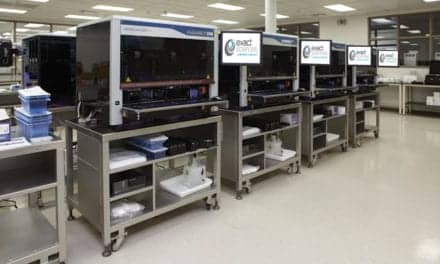Neuroblastoma, which mainly affects toddlers and young children, is a malignant tumor of the peripheral nervous system and around 50% of patients are high-risk cases. Recurrences occur frequently, and conventional therapies are no longer effective for these children.
With liquid biopsies, it is possible to monitor therapy success and to predict the recurrence of the tumor in time to take medical countermeasures. Scientists from leading European research institutions in pediatric oncology are testing this promising diagnostic tool under the coordination of the European Society for Pediatric Oncology (SIOPE) and scientific lead of the Princess Máxima Center for Pediatric Oncology and St. Anna Children’s Cancer Research Institute. The framework is a five-year Horizon Europe project.
Liquid Biopsies for Pediatric Diagnostics
Liquid biopsies are a promise for the future of personalized cancer medicine: Many children with high-risk neuroblastoma, i.e. 50% of all neuroblastoma cases are at risk of not responding to therapy and developing a recurrence.
Until now, the success of the therapy has been monitored with medical imaging procedures and bone marrow examinations. These examinations are expensive, invasive, and stressful for children who need anesthesia. Liquid biopsies are small blood samples, so the procedure is minimally invasive and comparatively simple.
In the laboratory, the sample can be used to determine whether children have responded to therapies. Finally, an impending recurrence can be detected early. Genetic tumor markers in the blood plasma, small pieces of DNA and messenger RNA (mRNA), which are released by tumor cells and provide information about the genetic changes in the tumor, are examined.
In the event of a relapse, these can help to find targeted therapies for children with neuroblastoma. For example, the enzyme anaplastic lymphoma kinase (ALK) plays a decisive role in cancer development. If a child’s tumor has a fault in the ALK-gene, it could be targeted with ALK inhibiting drugs.
Further reading: Two Common Biomarkers Predict Heart Risk in Asymptomatic Childhood Cancer Survivors
Liquid Biopsies in the Clinical Setting
A total of 25 leading European research institutions in pediatric oncology have now joined forces for an EU project funded by Horizon Europe. The aim is to study the benefit of these new diagnostic methods: Small blood samples will be collected several times from 150 patients with high-risk neuroblastoma and will be examined in laboratories such as the Princess Máxima Center and Labdia Labordiagnostik GmbH.
The European Society for Paediatric Oncology (SIOP Europe or SIOPE) is coordinating the research project. The goal of the project with the title A SIOPEN study to MOnitor NeuroblastomA relapse with LIquid biopsy Sensitive Analysis—in short: MONALISA—is to develop a clinical study that can be quickly implemented in clinical practice.
“And this is already the first special feature,” says Sabine Taschner-Mandl, Principal Investigator at St. Anna Children’s Cancer Research Institute, who is co-leading liquid biopsy diagnostics in MONALISA. “We are using liquid biopsies for children with neuroblastoma for the first time in a clinical setting; so far, we have only tested them in research.”
Lieve Tytgat, MD, pediatric oncologist specializing in neuroblastoma at the Princess Máxima Center for pediatric oncology, and scientific co-lead of the MONALISA project, added: “This research is a real breakthrough in the world of non-invasive diagnostics. Liquid biopsies are increasingly commonly used in adults with cancer. With this study we aim to catch up with research in adults; an important development for children with cancer.”
Monitoring the response to therapy and disease course is of great importance for improving the chance of survival of patients with high-risk neuroblastoma. MONALISA aims to close existing gaps in diagnostics and establish liquid biopsies as a standard procedure for monitoring relapsed neuroblastoma.
The method could also serve as a blueprint for other pediatric cancers. Marie Bernkopf, scientist at St. Anna Children’s Cancer Research Institute and head of the Labdia Laboratory Diagnostics Department where the analyses are carried out, emphasizes that technological progress here will bring a significant improvement for children and parents. For example, in some countries, mobile nurses will be able to take blood samples at home for check-ups, thus eliminating the burdensome trip to the clinic.
MONALISA also aims to analyze how patients and parents experience the use of liquid biopsies to be able to adapt the procedure in the future. With the project, the scientists are getting one step closer to effective personalized medicine in children with neuroblastoma and will offer hope for a better chance to be cured.





